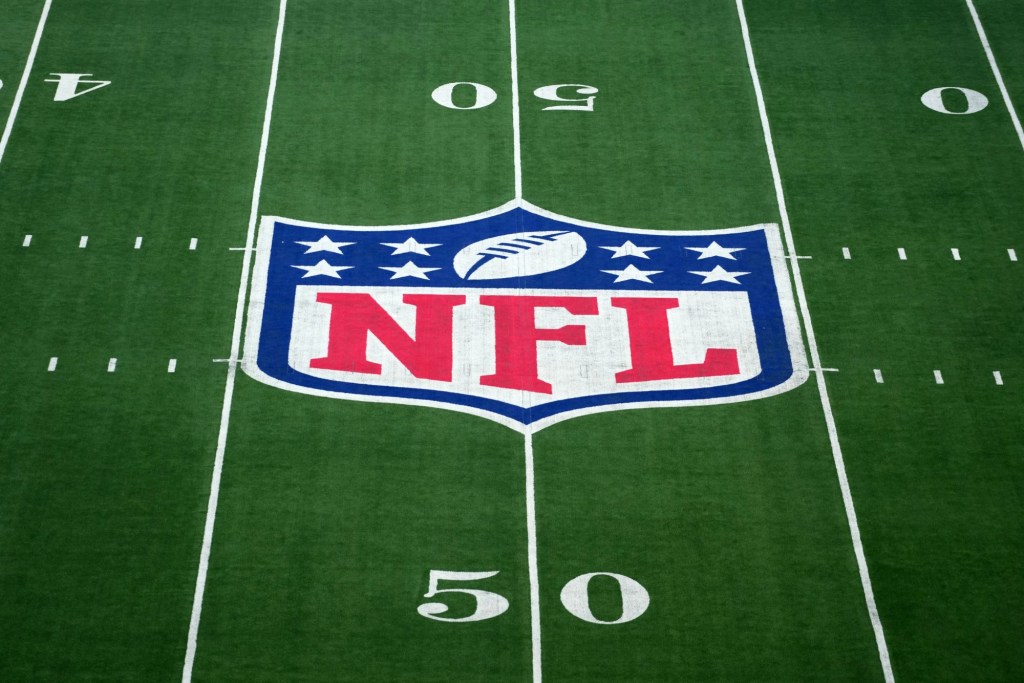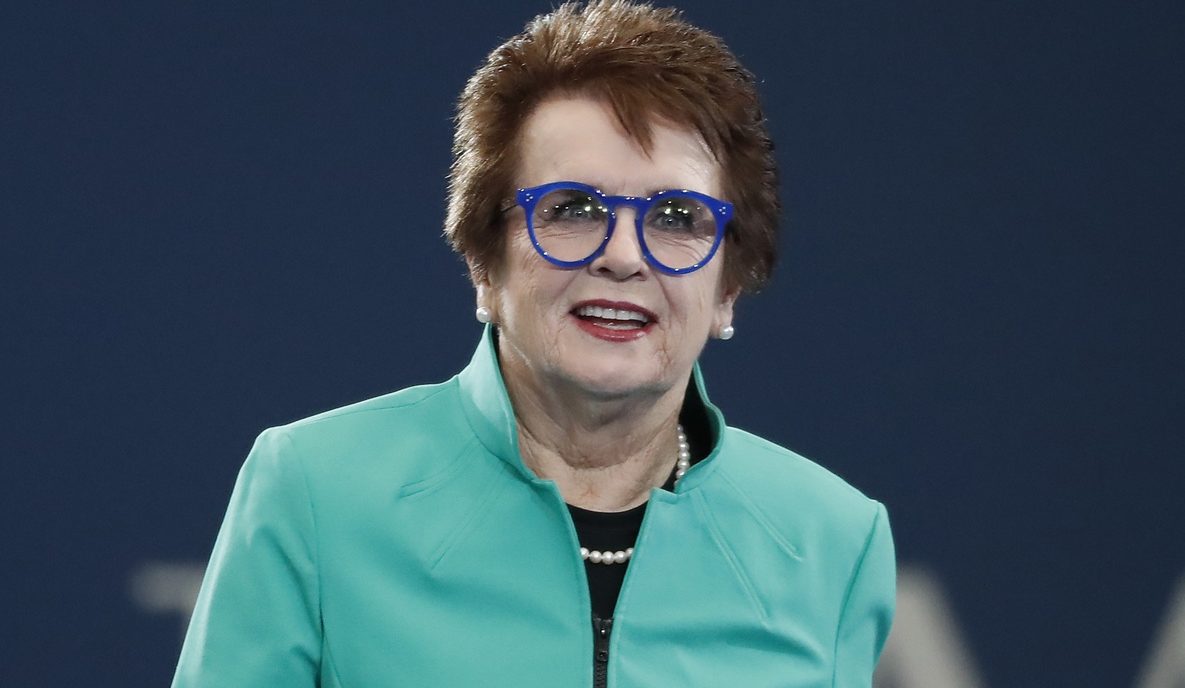The NFL is ready to contest its loss in the Sunday Ticket trial. … Bronny James is officially a Laker. … Nike has another weak earnings report. … The NWSL is seeing more record growth halfway through its season. … And Front Office Sports Today chats with Billie Jean King.
—David Rumsey and Eric Fisher
|
|
|

|
Kirby Lee-USA TODAY Sports
|
The NFL was dealt a major blow Thursday as its high-profile Sunday Ticket trial finally concluded.
The jury ruled in favor of the plaintiffs, ordering the league to pay $4.7 billion to residential subscribers in the case, as well as another $96 million to business owners. Those figures can be tripled under federal antitrust law. But despite the defeat for the NFL, the saga is far from over.
A source tells Front Office Sports that the next steps for the NFL will be filing post-trial motions, which will be heard by the trial judge, Philip S. Gutierrez, on July 31. If the verdict is not set aside, Gutierrez will likely then be asked to consider possible structural changes in the Sunday Ticket package, as well as plaintiffs’ lawyers’ request for an award of legal fees.
After that, the NFL would appeal any adverse rulings to the U.S. Court of Appeals for the 9th Circuit. Payment of any damages and imposition of any structural changes to NFL Sunday Ticket are expected to be stayed until all appeals have been concluded.
Time to Pay Up?
Pending any inflation under antitrust law, the 2.4 million individual fans in the class-action lawsuit are now owed roughly $1,958 each, with the 48,000 business owners set to receive $2,000 apiece. In total, the $4.796 billion the league owes would cost each team owner nearly $150 million each.
The NFL’s appeals could take months, if not years, though. So, while fans in the lawsuit received a big win Thursday, they won’t see any payments just yet—if ever.
Watch List
If the NFL ultimately loses, it may be forced to alter how it sells its media rights. YouTube is currently paying $2 billion annually for NFL Sunday Ticket rights for the remainder of this decade. But should the trial’s result hold up in further appeals, fans could end up seeing teams sell their local rights and out-of-market games end up on various streaming services or cable channels—an idea that the league considered in 2017.
For this season, though, there is unlikely to be any impact on how fans watch games. So, if you haven’t already, go ahead and look at your options for NFL Sunday Ticket on YouTube.
|
|
|
|

|
“Who knows, he might come in and be ready to play for us.”
—Anthony Davis on the Lakers drafting Bronny James with the No. 55 pick in the second round of Thursday’s NBA draft. Davis told ESPN that he supports the team taking the eldest son of LeBron James. “But one thing about Bronny, from what I’ve seen and what I heard, he wants to create his own path and he doesn’t want to be—even though he’s LeBron James’ son, he don’t want be seen as that. And I think having that mindset and trying to create his own path is going to work out for him.”
Front Office Sports reporter Alex Schiffer has more on what happens next in L.A.
|
|

|
Kirby Lee-USA TODAY Sports
|
An already embattled Nike delivered more bad news late Thursday, reporting a meager set of earnings that gave no confidence of a broad turnaround soon arriving for the sports apparel and footwear giant.
The company said it generated $12.6 billion in revenue for its fiscal fourth quarter, down 2% from the comparable period a year ago and below analyst expectations, and $51.4 billion for the full year, up 1%. The figures represent Nike’s weakest sales growth in more than 20 years, excluding the start of the COVID-19 pandemic and the 2008–09 financial crisis.
Net income was much more positive, earnings rising 45% in the quarter to $1.5 billion, and by 12% over the full year to $5.7 billion. Still, the figures represented the latest hit for the company that in the past six months has grappled with:
- An embarrassing reversal soon after a high-profile debacle with its rollout of newly designed MLB uniforms
- A continuation of a three-year, $2 billion cost-cutting program that has included multiple rounds of layoffs. Those cost reductions contributed to the better earnings results
- A perceived retreat by the brand in the running community, a market segment that formed the base of Nike’s origins more than five decades ago
The near-term prognosis is not encouraging either, as the company adjusted its fiscal 2025 outlook to project a sales decline of roughly 4-6% instead of a prior expectation of a gain during the year. The current quarter is expected to post a 10% drop.
“We are taking our near-term challenges head-on, while making continued progress in the areas that matter most to Nike’s future,” said John Donahoe, company president and CEO.
Investor reaction was swift as Nike shares fell by more than 11% in post-market trading on Thursday. Nike stock has already fallen by nearly 12% this year.
Contrasting Trends
Nike’s continued issues contrast sharply against a resurgence elsewhere in the category involving companies such as Foot Locker, Adidas, and Dick’s Sporting Goods.
“While we are encouraged by our progress, our fourth-quarter results highlighted challenges,” said Matthew Friend, Nike executive vice president and chief financial officer. “We are taking actions to reposition Nike to be more competitive, and to drive sustainable, profitable long-term growth.”
|
|
|
|

|
Lucas Boland-USA TODAY Sports
|
The NWSL’s two expansion teams and new $240 million media-rights deals are already paying off big-time for the fast-growing women’s soccer league. Halfway through the season, the NWSL is on pace to shatter records around attendance and viewership.
Heading into Week 14, the NWSL has already crossed the one million mark for total match attendance, representing the fastest journey to that number in a single season. Last year, the league surpassed one million fans at games after Week 18. This year, the NWSL expanded to 14 franchises, with both new clubs—Bay FC and the Utah Royals—sharing stadiums with their MLS counterparts that have capacity for around 20,000 fans each. NWSL teams are also playing 26 matches each this season, up from 22 last year, so the final attendance metrics will be boosted by that change, too.
Also helping attendance metrics are new frontiers for the NWSL, like hosting a game at Wrigley Field that drew more than 35,000 fans.
Time to Be Seen
With prime broadcast and streaming exposure on ESPN, CBS, Amazon, and Scripps Sports—which are paying a collective $60 million annually for the league’s media rights—the NWSL has seen a 95% increase in total viewership, compared to the first 13 weeks of the 2023 season. The NWSL is also airing 69 matches this season on its free streaming service, so opportunity remains to further cash in on the sale of media rights.
As happy as the NWSL may be with this season’s growth, there is likely more on the way. A Boston expansion team will enter the league in 2026, and commissioner Jessica Berman has made it clear she wants a 16th team launching at the same time.
|
|
|
|

|
Billie Jean King risked her career 50 years ago to fight for equal pay. Today, she’s just as active in that movement. She joins the show to discuss the progress we have seen over the past 50 years, the growth of the WNBA, NWSL, and PWHL, and the future of the equal pay movement.
🎧 Watch, listen, and subscribe on Apple, Google, Spotify, and YouTube.
|
|

|
On this day 67 years ago: MLB commissioner Ford Frick named the Cardinals’ Stan Musial, Giants’ Willie Mays, and Braves’ Henry “Hank” Aaron (above) to the National League All-Star Team, responding to an unprecedented vote-stuffing issue in Cincinnati that initially had eight Reds players in the starting lineup.
Fan voting for the All-Star Game began with the first two games in 1933–34, and resumed in ’47. Those initial years unfolded largely without incident, and instead helped popularize what became affectionately known as the Midsummer Classic. In ’57, the Reds were a decent team, ultimately finishing fourth in the NL, but were by no means a juggernaut worthy of dominating the All-Star Game roster. But boosted in part by preprinted ballots distributed by The Cincinnati Times-Star, Reds fans ultimately accounted for more than half of all votes cast, helping to heavily distort the results.
The scandal prompted a series of changes to All-Star Game voting. Roster selection immediately went back to managers, players, and coaches, and stayed that way until 1970. When MLB restored fan balloting, it did so with a series of new rules, including each team receiving the same number of paper ballots. After online balloting began in the late ’90s and then went fully digital in 2015, new forms of vote stuffing were occasionally attempted by individual fans. But league limits remain in place, currently standing at five votes per day, per fan during the first phase of balloting, and one per day, per fan during the second phase.
|
|
- Pickleball sensation Callie Jo Smith is paving the path for former college athletes who have transitioned into pickleball champions.
- The line to catch a glimpse of Panthers star Matthew Tkachuk serving chicken at Raising Cane’s in Pompano Beach, Fla., stretched around the block. Look here.
- Think you can make a dynasty out of a small school? We’re giving away two copies of the highly anticipated EA Sports College Football 25 video game. Enter here for a chance to win. See rules here.
|
|
 | The NFL team still needs to get league approval on its stadium deal and select a temporary home.
|
 | The deal is crucial to the long-term health of the league. |
 | Phelps testified against the World Anti-Doping Agency’s handling of banned substances. |
|
|












